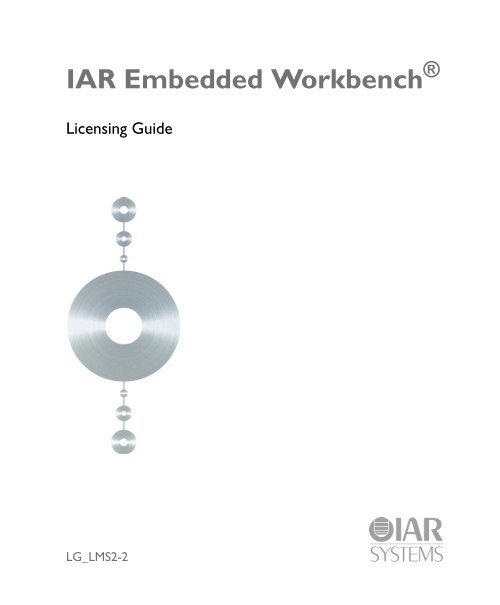

- #Iar license manager port how to#
- #Iar license manager port software#
- #Iar license manager port code#
#Iar license manager port how to#
We may also share this information with third parties for this purpose.This technical note gives you suggestions how to manually open the correct communication port for license requests. We will use this information to make the website and the advertising displayed on it more relevant to your interests. Targeting/Profiling Cookies: These cookies record your visit to our website and/or your use of the services, the pages you have visited and the links you have followed. Loss of the information in these cookies may make our services less functional, but would not prevent the website from working. This enables us to personalize our content for you, greet you by name and remember your preferences (for example, your choice of language or region). Functionality Cookies: These cookies are used to recognize you when you return to our website. This helps us to improve the way the website works, for example, by ensuring that users are easily finding what they are looking for. Analytics/Performance Cookies: These cookies allow us to carry out web analytics or other forms of audience measuring such as recognizing and counting the number of visitors and seeing how visitors move around our website.

They either serve the sole purpose of carrying out network transmissions or are strictly necessary to provide an online service explicitly requested by you. The cookies we use can be categorized as follows: Strictly Necessary Cookies: These are cookies that are required for the operation of or specific functionality offered. Now, in order to program the Sensor Board, connect the 10-pin ribbon cable (included with the EVAL-M355-ARDZ-INT package) from P12 on the EVAL-ADICUP3029 to P10 on the EVAL-M355-ARDZ-INT These two lower traces must not be cut or USB communication to the board would no longer work. This magnified version of the 3 traces that cross the island shows that the other two traces that cross the island are MBED_TX (shown bottom in picture) and MBED_RX (shown middle in picture). This is the outside trace of the 3 that cross the island from the debugger board to the main EVAL-ADICUP3029 board on the secondary side, but it is simpler to cut the trace in the location indicated to avoid accidentally cutting one of the other traces. The trace that needs to be cut on the secondary side of the board is SWD_DIO_3029.

Both signals still go to P12, this just removes them from P14. These traces should both be cut completely. The traces are cut after the P12 connector on the debugger side of the EVAL-ADICUP3029 so that the SWD signals are available at P12 and the ribbon cable that is included with EVAL-M355-ARDZ-INT can be used to connect those signals to the device to be programmed or debugged.Īs shown in this magnification, the upper trace is SWD_CLK_3029 and the lower trace is 3029_RESET. Protective eyewear should be worn and knife safety should be observed carefully. Programming the Sensor Board Using the ADICUP3029 On-Board Debugger
#Iar license manager port code#
eww workspace file in the source code and the project can be edited and the boards can be programmed and debugged from within IAR. After that, the project can be opened from the.
#Iar license manager port software#
The items in the Software section still apply, including installing IAR and running the ADuCM355 Installer. Some more info is available on the EVAL-M355-ARDZ-INT wiki page. When plugging in the debugger to the EVAL-M355-ARDZ-INT, make sure the pins of the cable and the on-board connector are correctly aligned and that pin 1 of the cable matches pin 1 on the EVAL-M355-ARDZ-INT board. If using this option, most of the remainder of this page is not needed. This cable is not included and can be found from distributors. An adapter cable such as the following is typically required to convert the 20-pin connector at the output of the debugger to the 10-pin connector on the EVAL-M355-ARDZ-INT. The IAR project for the Sensor Board is set up by default for a J-Link/J-Trace debugger. This is a good option for both programming and debugging if there is a stand-alone debugger available. If a stand-alone debugger is available, it can be plugged into P10 of the EVAL-M355-ARDZ-INT directly and none of the below rework is required.


 0 kommentar(er)
0 kommentar(er)
